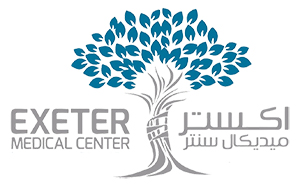Congenital Deformities of Lower Limb
Congenital deformities of the lower limbs are the developmental disorders which are present at birth and cause alteration in the shape and appearance of the legs. The exact cause for this is not known. There are several factors such as genetic factors which influence the fetal growth in the womb and teratogenic drugs and chemicals that can cause congenital deformities. Some of the congenital deformities of the lower limb include:
Congenital talipus equino varus (club foot): Congenital clubfoot is the most common and obvious of all the foot deformities. The feet become twisted inwards in such a way that top of the foot comes in place where the bottom should be. The initial treatment for clubfoot is the use of non-surgical methods such as serial manipulation and casting using the Ponseti method, taping, physical therapy and splinting, continuous passive motion with a machine. Surgical correction is done in severe cases which may include release of soft tissue and joint contractures, tendon lengthening and fixation of temporary pins in the foot.
Congenital hip problems: Congenital hip problems that can affect children are of two types namely:
- Femoral anteversion: Femoral anteversion is the condition in which the femur (thigh bone) becomes twisted inwards causing the child’s knees and feet to turn inwards giving the “pigeon-toed” appearance. It is most commonly evident when the child’s age is in between 4 and 6 years. Often no treatment is required as the defect is self-correcting. Surgical treatment may be considered if the condition is severe and the child is above the age of 8. The surgery called, femoral derotation osteotomy is done which involves cutting the femur bone and rotating it to bring it to correct position.
- Developmental dysplasia of the hip: Developmental dysplasia of the hip (DDH) is a condition which is seen in infants and children as a result of developmental problems in the hip joint. The femur partially or completely slips out of the hip socket causing dislocation at the hip joint. Pavlik harness is used in newborns and infants of age less than 6 months in order to hold the hip joint in place during growth of the child. Surgical treatment for this condition includes closed reduction with hip spica casting and open reduction.
Congenital genu varus (bowed legs): Bowed legs are seen in children below 2 years. It is a normal variation in the appearance of the legs and gradually improves by the age of 3 to 4 years. Night splints may be given or osteotomy can be performed in severe cases.
Leg length discrepancy: Leg length discrepancy is a condition in which one leg is shorter than the other leading to problems in posture and walking pattern. There may be associated pain in the back, hip knee or ankle. It can be corrected by a reconstructive procedure called limb lengthening during which the deformed bone is lengthened by replacing the lost bone. The deformity can be corrected using minimally invasive surgery and may require a hospital admission of 1-2 nights.



